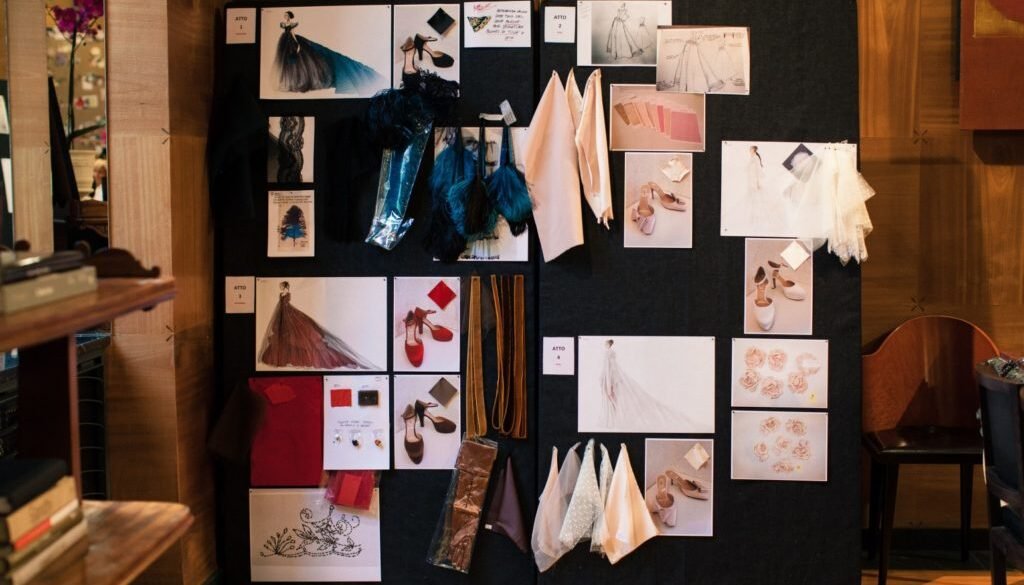Valentino and Coppola’s Operatic Collaboration
A grand marble staircase sweeps through the middle of a dimmed, simply furnished stage, as audience members sit in awe watching a train of deep turquoise and midnight blue ripple down the staircase like water. Layer upon layer of tulle and lace begin to fill the grand onstage living room, and the soprano sings the opening bars by Verdi. The stage is set to be a night no one will forget.

When I first heard that Sofia Coppola and Valentino Garavani had chosen to collaborate and support Teatro dell’ Opera di Roma with a production of La Traviata, my heart skipped a beat. Two of the most visually creative minds of our time collaborating on one of my favorite works was a dream come true – and I was not disappointed.
Beautiful hues of rose, creams and reds were offset by elegant black and white – and accents of deep teal; intricate lace and layers upon layers of dyed tulle created a glow of feathery light around the costumes and meshed with the sheer beauty of the voices and Verdi’s exquisite music. I was on the edge of my velvet seat throughout the performance, taking in the beauty.
Every element, from the arch of the entryway, to the gold paint of flowers upon a vase collaborated and complemented one another in a way that only Valentino and Coppola could manage to do. The color schemes and palettes offered deep rich hues to match every note that trickled through the air and rested upon the audience members to bring the tale of the opera’s protagonist, the renowned and doomed courtesan Violetta, to stage.
Sofia Coppola made her operatic debut as director for La Traviata, where she skillfully balanced the classic setting – 18th century Paris – with a contemporary importance. Similar to her visually-astute skills in the film adaptation of Marie Antoinette, Coppola brought her indelibile artistic eye to the stage – apparent in so many details of staging, lighting and color.

Intricacy is one of the most accurate words to describe the opera experience of La Traviata. Valentino’s reappearance in this production brought with it an experience unlike any other. The costumes of La Traviata are what truly expressed and enhanced Coppola’s vision – and vice versa. Here are a few highlights. In Act One, the chorus partygoers donned ethereal dresses in the palest pastels, while Violetta wore stark black with that sumptuous teal train. One of the scene-stealers was the dress of Violetta’s best friend – a white dress with stacks of tulle descending from her waist. All of the gowns had a gauzy halo thanks to Valentino’s luxurious use of sheer tulle and lace layers. In Act Three, the palette shifted – the revelers wore sheer black lace shrouded over undulating shades of cremes and ivory, while Violetta stood out in brilliant red – which was accented by the splashes of red on the ballet dancers during the party scene.

On another note – unlike other operas I have frequented (mostly at The Met in New York), the subtitles were projected above the stage in both English and Italian to create a beautiful comparison of the libretto in two languages. This was a first for me in a live production, and I enjoyed the Italian lesson.
Sofia Coppola and Valentino Garavani successfully put opera back onto the map with their truly stunning collaboration of La Traviata.
Bravissimi!
xo


